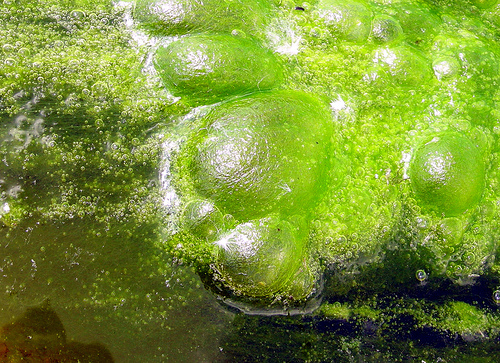Oasis Assassin
 No. Enc.:
No. Enc.: 1 (1)
Alignment: Neutral
Movement: None
Armor Class: 9
Hit Dice: 16+3
Attacks: see below
Damage: see below
Save: None
Morale: None
Hoard Class: XIX (x3)
XP: 5100
A mutant species of Brocchinia reducta, often mistaken for a solitary oasis in the wasteland. The bromeliad appears to be a large area of vegetation surrounding a small pool of sweet scented water. Oasis assassins typically have a maximum radius of 1d4x100 feet, centering around a pool of water measuring 1D6x10 feet in diameter and 1D4x10 feet deep.
The bromeliad has the mutation prey scent, which turns out to be a benefit in attracting animals to the pool. When prey approaches the pool, they discover that the surrounding vegetation is actually spongy and covered with a slippery dermal sap which causes them to slip into the pool. The deep slope to the pool and slippery nature of the sides make it extremely difficult to escape, eventually resulting in most creatures drowning (see Mutant Future, page 38, under Swimming; Also, see Drowning rules in Wisdom from the Wastelands #23).
If slain, the oasis assassin will be found to contain as many gallons of water as one quarter the amount of its hit points.
Mutations: Abnormal Size (gigantism), Prey Scent, Spongy Wood (Creatures of the Wastes), Dermal Slippery Sap
NEW MUTATION (Beneficial Plant Mutation)
Dermal Slippery Sap
The plant’s sap is a lubricant that causes creatures that come in contact with it to make a Saving Throw vs Stun Attacks or DEX ability check with a penalty of -4 to avoid slipping and falling.






